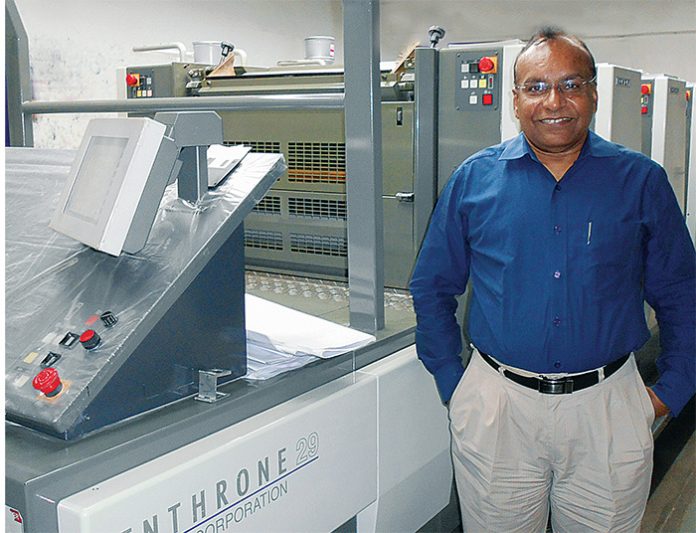Little over three years ago when Mumbai-based commercial offset printer Supressa Graphics wanted to go in for a new machine it found itself standing at the crossroads. The two Heidelberg presses that it owned were now old and falling behind in terms of technology. The company had to upgrade itself to meet the quality parameters of its ever demanding corporate clients.
“Initially we were seriously considering continuing our association with Heidelberg. But then we thought of Komori as well as Roland. Ultimately we ended up with a Komori Enthrone 429 four color press. And during these three years the machine has performed exceptionally well,” says RR Subbu, director technology of Supressa Graphics.
Small footprint
Although all the three brands that the company had zeroed in on were well- known names in the printing industry, says Subbu, an important reason for Supressa ultimately going in for Komori Enthrone 429 was that the thickness of the substrate can go up to
0.6 mm of the board. Additionally, he adds, this machine was the only one offering a double diameter transfer cylinder in the commercial segment. Another factor that favoured the Komori Enthrone 429 machine was its small footprint.
“In 2011 our printing operations were moving from the Navi Mumbai plant which was spread over 37,500 square feet to the current location in Lower Parel which has an area of 2,400 square feet. Size for us was a critical factor,” points out Subbu adding, “The Enthrone is installed in an 800 square feet space and still leaves space for paper movement on the shopfloor.”
Before moving to the Lower Parel location, Supressa was operating from Navi Mumbai from where it was running its web operation business and its printing operations. Moving to Lower Parel made sense as a lot of corporate clients were based in and around the plant.
A time saving option
Not only has the Komori Enthrone 429 saved on space but it has also given a significant boost to productivity, says Subbu. “In the last three years the Komori has been meeting all our needs. What we were doing with the two machines earlier is now being done on a single machine. What we could do in a 24-hour schedule is now being done in 10-12 hours. This is possible because makeready time on this machine is very fast, practically zero,” he adds.
Subbu points out that there have been instances when they have done as many as 40 jobs in a day compared with 10 jobs that they could do with the two older machines. However, he says that one thing that he misses in this machine is the online coater facility. “Such a facility would have made this machine perfect for the commercial segment.”
Run-of-the-mill firms will not survive
Commenting onthescenariointhe commercial printing industry, Subbu says, thatthemostprominenttrendhe
sees is thatrun-of-the-mill companies will ceasetosurviveinthevery nearfuture.
“Companies who play just on price will have to ultimately close down. I say this because in order to grow one has to invest in technology and have a quality team to use that technology.
Companies which work on wafer thin margins create no surplus to plough back into technology and talent. They cannot just keep doing that forever. Already we are seeing many such firms closing down in Lower Parel itself,” Subbu argues. “Either they will have to dramatically alter their mindset or they will go out of business.”
Future plans
According to Subbu, Supressa has a philosophy of not stretching itself beyond a certain point. He says that the company would not add machines just because it can afford to do so or that easy financing is available. “We are currently working to clear off the debts related to Komori. As for new machines yes we would go in for a bigger machine but that will not happen before another two years,” he concludes.
















